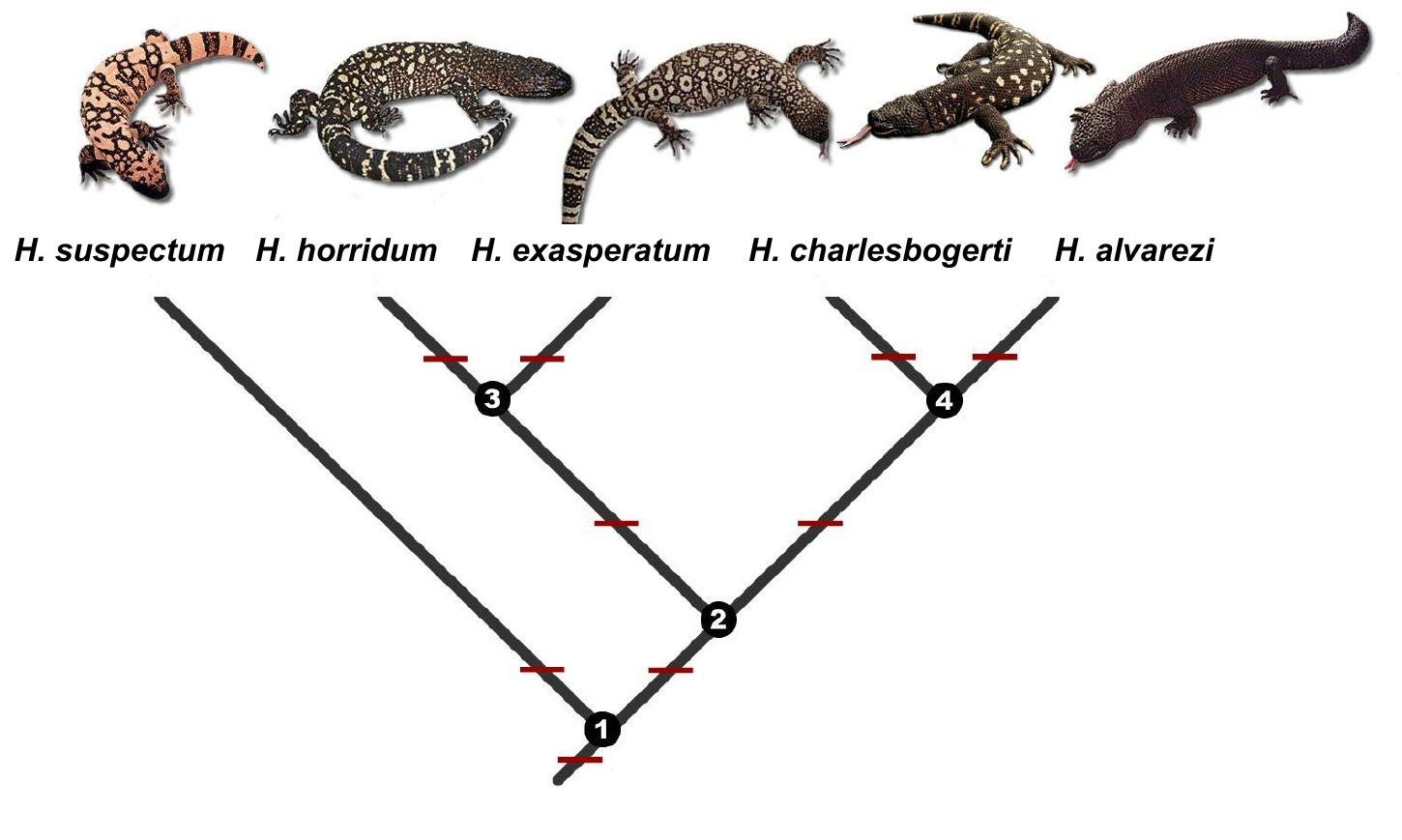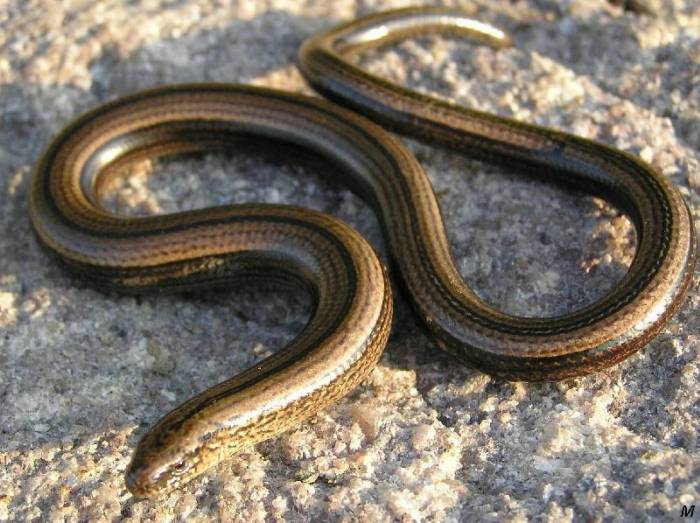|
Helodermatidae
The Helodermatidae or beaded lizards are a small family of lizards endemic to North America today, but formerly more widespread in the ancient past. Traditionally, the Gila monster and the Mexican beaded lizard were the only species recognized, although the latter has recently been split into several species. While the fossil record of this family may date back to as far as the Cretaceous with genera such as '' Primaderma'' and '' Paraderma'' of North America, the oldest definitive members of the Helodermatidae date to the Early Oligocene, with ''Lowesaurus matthewi'' from North America (Nebraska) and ''Euheloderma gallicum'' from Europe Europe is a large peninsula conventionally considered a continent in its own right because of its great physical size and the weight of its history and traditions. Europe is also considered a Continent#Subcontinents, subcontinent of Eurasia ... (France). References {{Reflist Lizard families Taxa named by John Edward Gray ... [...More Info...] [...Related Items...] OR: [Wikipedia] [Google] [Baidu] |
Heloderma
''Heloderma'' is a genus of toxicoferan lizards that contains five species, all of which are venomous. It is the only extant genus of the family Helodermatidae. Description The genus ''Heloderma'' contains the Gila monster (''H. suspectum'') and four species of beaded lizards. The Gila monster is a large, stocky, most of the time slow-moving reptile that prefers arid deserts. Beaded lizards are seen to be more agile and seem to prefer more humid surroundings. The tails of all species of ''Heloderma'' are used as fat storage organs. The scales of the head, back and tail are bead-like, containing osteoderms for better protection. The scales of the belly are free from osteoderms. Most species are dark in color, with yellowish or pinkish markings. Venom The venom glands of ''Heloderma'' are located at the end of the lower jaws, unlike snakes' venom glands, which are located behind the eyes. Also, unlike snakes, the Gila monster and beaded lizards lack the musculature to inject veno ... [...More Info...] [...Related Items...] OR: [Wikipedia] [Google] [Baidu] |
Gila Monster
The Gila monster (''Heloderma suspectum'', ) is a species of venomous lizard native to the Southwestern United States and the northwestern Mexican state of Sonora. It is a heavy, typically slow-moving reptile, up to long, and it is the only venomous lizard native to the United States. Its venomous close relatives, the four beaded lizards (all former subspecies of ''Heloderma horridum'') inhabit Mexico and Guatemala. The Gila monster is sluggish in nature, so it is not generally dangerous and very rarely poses a real threat to humans. However, it has a fearsome reputation and is sometimes killed in spite of the species being protected by state law in Arizona. History The name "Gila" refers to the Gila River Basin in the U.S. states of Arizona and New Mexico, where the Gila monster was once plentiful. ''Heloderma'' means "studded skin", from the Ancient Greek words (), "the head of a nail or stud", and (), "skin". ''Suspectum'' comes from the describer, paleontologist Edwa ... [...More Info...] [...Related Items...] OR: [Wikipedia] [Google] [Baidu] |
Gila Monster
The Gila monster (''Heloderma suspectum'', ) is a species of venomous lizard native to the Southwestern United States and the northwestern Mexican state of Sonora. It is a heavy, typically slow-moving reptile, up to long, and it is the only venomous lizard native to the United States. Its venomous close relatives, the four beaded lizards (all former subspecies of ''Heloderma horridum'') inhabit Mexico and Guatemala. The Gila monster is sluggish in nature, so it is not generally dangerous and very rarely poses a real threat to humans. However, it has a fearsome reputation and is sometimes killed in spite of the species being protected by state law in Arizona. History The name "Gila" refers to the Gila River Basin in the U.S. states of Arizona and New Mexico, where the Gila monster was once plentiful. ''Heloderma'' means "studded skin", from the Ancient Greek words (), "the head of a nail or stud", and (), "skin". ''Suspectum'' comes from the describer, paleontologist Edwa ... [...More Info...] [...Related Items...] OR: [Wikipedia] [Google] [Baidu] |
Mexican Beaded Lizard
The Mexican beaded lizard (''Heloderma horridum'') is a species of lizard in the family Helodermatidae The Helodermatidae or beaded lizards are a small family of lizards endemic to North America today, but formerly more widespread in the ancient past. Traditionally, the Gila monster and the Mexican beaded lizard were the only species recognized, ..., one of the two species of venomous beaded lizards found principally in Mexico and southern Guatemala. It and congener (biology), the other member of the same genus, the Gila monster (''Heloderma suspectum''), are the only lizards known to have evolved an overt venom delivery system. The Mexican beaded lizard is larger than the Gila monster, with duller coloration, black with yellowish bands. As it is a specialized predator that feeds primarily upon eggs, the primary use of its venom is still a source of debate among scientists. This venom has been found to contain several enzymes useful for manufacturing drugs in the treatment of ... [...More Info...] [...Related Items...] OR: [Wikipedia] [Google] [Baidu] |
Lizard Families
This is a list of the extant lizard families. Lizards are an informal group of squamates. Taxonomy There are five infraorders which separate the lizards, these are: Diploglossa, Gekkota, Iguania, Platynota and Scincomorpha. This separation is based mainly on morphological similarities between family groups. The Diploglossans and Platynotans are two closely related infraorders which are very diverse families. Very few generalisations can be placed upon these families morphologically. Many species are limbless, while others have fully formed limbs. It is believed that these lizards are the closest lizard relation to the snakes. The Gekkotans are the second most diverse group of lizards. They can be morphologically distinguished by the absence of temporal arches, which allows greater moveability of the head. Most species also have cloacal sacs and fixed eyelids. The Iguanians are another diverse group of lizards. All iguanians are fully limbed. Most species ambush their prey, capt ... [...More Info...] [...Related Items...] OR: [Wikipedia] [Google] [Baidu] |
Oligocene
The Oligocene ( ) is a geologic epoch of the Paleogene Period and extends from about 33.9 million to 23 million years before the present ( to ). As with other older geologic periods, the rock beds that define the epoch are well identified but the exact dates of the start and end of the epoch are slightly uncertain. The name Oligocene was coined in 1854 by the German paleontologist Heinrich Ernst Beyrich from his studies of marine beds in Belgium and Germany. The name comes from the Ancient Greek (''olígos'', "few") and (''kainós'', "new"), and refers to the sparsity of extant forms of molluscs. The Oligocene is preceded by the Eocene Epoch and is followed by the Miocene Epoch. The Oligocene is the third and final epoch of the Paleogene Period. The Oligocene is often considered an important time of transition, a link between the archaic world of the tropical Eocene and the more modern ecosystems of the Miocene. Major changes during the Oligocene included a global expansion o ... [...More Info...] [...Related Items...] OR: [Wikipedia] [Google] [Baidu] |
Europe
Europe is a large peninsula conventionally considered a continent in its own right because of its great physical size and the weight of its history and traditions. Europe is also considered a Continent#Subcontinents, subcontinent of Eurasia and it is located entirely in the Northern Hemisphere and mostly in the Eastern Hemisphere. Comprising the westernmost peninsulas of Eurasia, it shares the continental landmass of Afro-Eurasia with both Africa and Asia. It is bordered by the Arctic Ocean to the north, the Atlantic Ocean to the west, the Mediterranean Sea to the south and Asia to the east. Europe is commonly considered to be Boundaries between the continents of Earth#Asia and Europe, separated from Asia by the drainage divide, watershed of the Ural Mountains, the Ural (river), Ural River, the Caspian Sea, the Greater Caucasus, the Black Sea and the waterways of the Turkish Straits. "Europe" (pp. 68–69); "Asia" (pp. 90–91): "A commonly accepted division between Asia and E ... [...More Info...] [...Related Items...] OR: [Wikipedia] [Google] [Baidu] |
Early Oligocene
The Rupelian is, in the geologic timescale, the older of two ages or the lower of two stages of the Oligocene Epoch/Series. It spans the time between . It is preceded by the Priabonian Stage (part of the Eocene) and is followed by the Chattian Stage. Name The stage is named after the small river Rupel in Belgium, a tributary to the Scheldt. The Belgian Rupel Group derives its name from the same source. The name Rupelian was introduced in scientific literature by Belgian geologist André Hubert Dumont in 1850. The separation between the group and the stage was made in the second half of the 20th century, when stratigraphers saw the need to distinguish between lithostratigraphic and chronostratigraphic names. Stratigraphic definition The base of the Rupelian Stage (which is also the base of the Oligocene Series) is at the extinction of the foraminiferan genus ''Hantkenina''. An official GSSP for the base of the Rupelian has been assigned in 1992 (Massignano, Italy). The transi ... [...More Info...] [...Related Items...] OR: [Wikipedia] [Google] [Baidu] |
North America
North America is a continent in the Northern Hemisphere and almost entirely within the Western Hemisphere. It is bordered to the north by the Arctic Ocean, to the east by the Atlantic Ocean, to the southeast by South America and the Caribbean Sea, and to the west and south by the Pacific Ocean. Because it is on the North American Plate, North American Tectonic Plate, Greenland is included as a part of North America geographically. North America covers an area of about , about 16.5% of Earth's land area and about 4.8% of its total surface. North America is the third-largest continent by area, following Asia and Africa, and the list of continents and continental subregions by population, fourth by population after Asia, Africa, and Europe. In 2013, its population was estimated at nearly 579 million people in List of sovereign states and dependent territories in North America, 23 independent states, or about 7.5% of the world's population. In Americas (terminology)#Human ge ... [...More Info...] [...Related Items...] OR: [Wikipedia] [Google] [Baidu] |
Cretaceous
The Cretaceous ( ) is a geological period that lasted from about 145 to 66 million years ago (Mya). It is the third and final period of the Mesozoic Era, as well as the longest. At around 79 million years, it is the longest geological period of the entire Phanerozoic. The name is derived from the Latin ''creta'', "chalk", which is abundant in the latter half of the period. It is usually abbreviated K, for its German translation ''Kreide''. The Cretaceous was a period with a relatively warm climate, resulting in high eustatic sea levels that created numerous shallow inland seas. These oceans and seas were populated with now- extinct marine reptiles, ammonites, and rudists, while dinosaurs continued to dominate on land. The world was ice free, and forests extended to the poles. During this time, new groups of mammals and birds appeared. During the Early Cretaceous, flowering plants appeared and began to rapidly diversify, becoming the dominant group of plants across the Earth b ... [...More Info...] [...Related Items...] OR: [Wikipedia] [Google] [Baidu] |






.jpg)
